- Home
- Tom Clancy
Fighter Wing: A Guided Tour of an Air Force Combat Wing Page 17
Fighter Wing: A Guided Tour of an Air Force Combat Wing Read online
Page 17
Weapons deliveries of the Mk 82 500 lb./227.1 kg. bombs tend to be made in “strings” or “sticks” of bombs, usually in multiples of six, though as few as one at a time can be dropped. Until the new Precision Guided Munitions (PGMs) come on-line later in the 1990s, the B-1 will run a string of bombs across or along the line of a target, insuring that at least one of the deadly projectiles hits it. Precision targeting was not a big concern back in the days of nuclear deterrence. During the Cold War, target aim points were planned years in advance, and crews trained and drilled endlessly for specific missions until the target area was as familiar as their own neighborhoods. When you’re dropping 500-kiloton thermonuclear weapons, an error of a few meters one way or the other is not significant. But in the conventional role, the B-1’s current lack of PGMs is a crippling handicap.
With only 500 lb./227.1 kg. bombs to drop, you might wonder why the USAF has not grounded the B-1B fleet and scheduled it for decommissioning. The reason is that while it has some shortcomings in the area of weapons and communications, the Bone represents a potential to rapidly deliver a vast load of precision ordnance over intercontinental distances. Thus, the Bone is at the core of the new “Bomber Roadmap” program that has new communications and weapons systems being installed to support ACC’s current and projected conventional missions. Where the B-1B is concerned, this will be a phased upgrade program running over the next five years or so.
In 1996, the active squadrons of B-1Bs will begin to receive the Conventional Munitions Upgrade Program (CMUP) that will provide modified bomb racks bombs (called “Tactical Munitions Dispensers”) for delivering CBU-87/89/97 cluster bombs. By 2001, a more ambitious second phase of the CMUP will begin equipping the fleet with the new Joint Direct Attack Munition (JDAM) system. This will require installation of a GPS receiver, an upgraded mission computer, and wiring the bomb bay for the high-speed MIL-STD-1760 data bus, which transfers GPS time, position, and velocity data from the aircraft to the smart bombs.
After many delays and configuration hassles, the NAVSTAR/GPS system, with a suitable low-profile antenna, is finally being integrated onto the B-1’s data bus. This Rockwell Collins MAGR unit will supplement or replace the outdated inertial navigation system currently installed on the Bone.
One thing that will have to be upgraded is the communications systems, which are currently oriented towards the old Doomsday mission of the Cold War (largely limited to receiving and authenticating the “Go” codes). Thus, the priority is to install the new Have Quick radios and JTIDS terminals in the bombers’ communications bays, so that they will be able to work with the other combat aircraft in the ACC force. Thus, the CMUP will also provide new Rockwell Collins ARC-210 Have Quick II jam-resistant tactical radios. Also likely is a mid-life upgrade for the ALQ-161 jammer, and better integration of advanced missile-warning and radar-warning systems into the defensive avionics suite. Because of the perceived lack of sophisticated threats, money for electronic countermeasures is very scarce in the budget right now. But with the planned decommissioning of the EF- 111A Ravens in 1996, the B-1B’s onboard jammer will probably be the most capable airborne jammer in the USAF inventory, and may well be required to fill in that role for a time.
The B-1B is an airframe and a community in transition, with much potential that will have to be realized if it is to perform useful work into the 21st century. Doing this will not be cheap, but ACC will need these bombers if they are to succeed in their goal of supporting two major regional conflicts at one time.
BOEING KC-135R STRATOTANKER
Where once a trip to Europe was considered an adventure, today a trip to the Middle East elicits a travel-weary reaction. “I don’t want to go to Saudi Arabia again; I’ve been there five times, [and] I’ve got enough souvenirs,” one KC-135 pilot said.
—QUOTED IN AIR FORCE TIMES, FEBRUARY 6, 1995
It is a hard fact that much of the “Global Reach” of the U.S. Air Force depends on a fleet of aerial refueling tankers that are, in many cases, now older than their crews. The first KC-135 made its maiden flight on August 21, 1956, and the aircraft entered service in January 1957. A total of 798 KC-135 Stratotankers were built between 1956 and 1966. Their original, highly critical mission was to refuel the SAC fleet of B-52 nuclear bombers on their way to Doomsday (and back). Many of these planes spent decades standing alert duty, enjoying the fanatically meticulous maintenance that SAC enforced. Because the aircraft spent so little time under the stresses of flying, the -135 fleet is in surprisingly good condition. In fact, the fleet average on flight hours per airframes is something less than fifteen thousand hours, which is amazing when you consider that most of them were built in the early 1960s, and an equivalent commercial Boeing 707 might have over 120,000 flight hours! Now equipped with new engines, new wing skins, strengthened landing gear, and modernized avionics, the 552 remaining KC-135s will continue to give many years of good service. They will have to, because there is currently nothing on the drawing boards, or in the Air Force budget, to replace them.
Throughout the history of aerial warfare, the single most limiting factor has been the fuel capacity—and thus the range—of the aircraft flying the combat missions. The lack of a long-range escort fighter cost the Germans the Battle of Britain in 1940. Conversely, the P-51 Mustang, with its “seven-league boots,” was the deciding factor in the success of the 8th Air Force in their operations over Germany. Thus, the idea of extending an aircraft’s range by aerial refueling is such a simple idea, it is surprising that it took so long to catch on.
The first known attempt to do so occurred in 1921, when an aviator named Wesley May climbed from one flying biplane to another with a 5-gallon /18.9-liter can of gas strapped to his back. Later, daring young officers like Major Henry H. “Hap” Arnold and Major Carl A. Spaatz (both became generals in World War II) experimented with simple hose and gravity-feed or pump arrangements for passing fuel from one aircraft to another. At the time, this was regarded more as a stunt to set flight endurance records than a realistic operational option; but it was a start on the road to the airborne tankers of today. World War II passed without any known use of aerial refueling by any of the combatants, though it would be the last major conflict where the technique would not be used.
After World War II, two different technologies for aerial refueling were developed in the United States. The first of these, the probe-and-drogue method, required the tanker aircraft to reel out a hose with a cone-shaped receptacle (the drogue), that could then be “speared” by a fixed or extensible probe on the receiving aircraft. This method is preferred by the U.S. Navy, the Royal Air Force, and a number of NATO countries. The other method, Boeing’s Flying Boom, required a trained boom operator with nerves of steel to guide a telescoping boom with twin steering fins into a locking receptacle on a receiving aircraft, which meanwhile is trying to maintain precise formation in the tanker’s turbulent wake. This technique appealed to the USAF, who felt that the actual hookup between the aircraft should be controlled by a professional who did this odd task for a living. Tanker “boomers,” as they are known, are usually sergeants who double as the aircraft’s crew chief.
The first operational tankers, the KB-29, the KB-50, and the KC-97, were derived from the Boeing B-29 bomber. Their shortcomings were obvious. Because of their four piston engines, the early tankers simply could not keep up with the new generation of jet fighters and bombers that were quickly becoming the primary customers for these aerial gas stations. The solution, clearly, was going to be a jet tanker capable of integrating itself with the new jet combat force of the USAF.
The problem was that until someone developed a jet transport with sufficient payload capacity, this idea was going to stay just that—an idea. Fortunately, in the early 1950s there was an international race to produce the first commercially viable jet transport, and the USAF was able to pick their new tanker from the winners. The British Comet was first into service, but an unforeseen problem with metal fatigue around th
e window frames led to the loss of several aircraft in flight through explosive decompression. In the United States, Boeing’s long experience with designing pressurized high-altitude aircraft like the B-29 paid off in the design of a tremendously strong airframe that would become the basis for both the military C-135 transport and the 707 commercial passenger liner. In 1954, soon after the first flight of Boeing’s first jet transport prototype, the Model 367-80, the Air Force ordered a fleet of Boeing tankers to support the bomber force of the then-Strategic Air Command.
Boeing’s project number for what became known as the Stratotanker was Model 717. It differed from the basic 707 airliner in having smaller overall dimensions, a somewhat narrower fuselage, no cabin windows, and, of course, an extendible, finned refueling boom and tiny compartment for the boom operator under the tail. The tankers, constructed more simply, to military standards, than their commercial cousins, actually went into service before the Boeing 707 completed final commercial certification.
Now, you should understand that if the whole fuselage barrel section were filled with fuel, the plane would be too heavy to take off. Thus, the fuel carried is actually contained in a relatively small volume, leaving the inside of the cabin available for other uses. All of the tanker-related equipment is below the main deck, leaving seating space for passengers or an equivalent volume of cargo—up to 83,000 lb./37,650 kg.
Over the years, more than two dozen variants of this versatile airframe have been built, including a bewildering collection of “deep black” intelligence collection platforms, going by such names as Rivet Joint and Cobra Ball. A small number of all-cargo versions were built as C-135 Stratolifters. The -135 has also enjoyed some modest success in the export market; a dozen C-135F models were sold to France in 1964 to support that country’s tiny but potent nuclear strike force of Mirage IV bombers. Canada and Israel also purchased tanker/cargo aircraft from the 707/KC-135 family, and continue to operate them today.
If you take a walk around one of the big tankers, the first thing that strikes you is how much it looks like an old Boeing 707, but with fewer windows. This absence of viewports is one of the reasons for the Stratotankers’ longevity, since each hole that you put in a pressurized airframe is just another place for structural fatigue cracks to start.
The entire KC-135 fleet was originally equipped with the noisy and fuel-guzzling Pratt & Whitney J-57 engine, which also put out a lot of smoke on takeoff. Fortunately, most of the aircraft remaining in service have been re-engined with more efficient and powerful General Electric/SNECMA CFM- 56 turbofans, creating the KC-135R variant. The engine change reduces noise by 85% and pollutant emissions by 90%, and the increased power allows for a much shorter takeoff run. The biggest benefit, though, is the vastly improved fuel efficiency, which allows a KC-135R to offload up to 50% more fuel than one of the earlier J-57-equipped birds. While most aircraft in the USAF fleet are equipped to take fuel from tankers, most KC-135s are not themselves equipped with flight-refueling receptacles. The few that are so equipped are known as KC-135RTs, and are highly coveted assets by the new Air Mobility Command (AMC), which controls most of their operations, maintenance, and use. Thus, unlike the small fleet of McDonnell Douglas KC-10 Extenders (the newest USAF tanker, based on the commercial DC-10), most KC-135s can only be refueled on the ground. This makes for an interesting set of decisions for the operators of the -135. Unlike the Extender, they can either off-load fuel or deploy to an overseas area, but not both at the same time.
You get into the KC-135 through an entry hatch in the bottom of the fuselage, on the left side of the nose. It requires a bit of a climb to get up the ladder and into the cockpit, something like the climb into the conning tower of a submarine. Once there, the first thing you will probably notice is that by the standards of current commercial airliner cockpits, the -135 is decidedly ancient. The four-person flight crew usually includes three officers (aircraft commander, pilot, and navigator/radar operator) and one enlisted airman (the crew chief/ boom operator), each with a seat in the tight little workspace up front. Very little of the modern computer age is evident, other than a digital flight management system and the throttle controls for the four CFM-56 engines. The fit of communications and navigation gear enables the tanker to maintain station precisely and talk to its customers, though the navigation gear is also a bit dated. Until the planned installation of a GPS receiver later in the 1990s, the navigator has to depend on the old standbys of shooting the sun and stars with a sextant, and the old-style LORAN and TACAN navigation beacon systems. The nose-mounted radar is a Texas Instruments APQ-122(V) weather and ground-mapping radar, which is capable of assisting in the navigator’s tasks. All USAF tankers are unarmed; and indeed, they are not even equipped with basic self-protection radar warning receivers, chaff or flare dispensers, or jamming pods. As a result, they can only survive and operate under conditions of total local air supremacy. It is not hard to understand why, when you consider that a tanker is nothing but a relatively slow and unmaneuverable bag of fuel, requiring just one cannon shell or “hot” warhead fragment from an AAM to turn it into a very large fireball.
As you move aft, you encounter the lavatory compartment on the left side, just aft of the cockpit. You are struck again by the rather spartan nature of this most necessary of aerial conveniences; it does not even flush! Instead, they use the same kind of chemical toilet “packs” found on the B-1B. Also, for the male crew members, there is a “whiz tube” urinal. While convenient, this can be deadly during rough flights, as the spring-loaded lid tends to snap shut when “bumped.” Just across from the lavatory is the galley—or more precisely, the place where box lunches and the thermos bottles for coffee and water are kept. There are no microwave ovens or refrigerators, just a bare aluminum rack, looking for all the world like an airline food/drink cart with no wheels. Just aft of the lavatory compartment on the aircraft’s left side is a large pressurized cargo door, big enough to load large items like bulk cargo, duffel bags, or other personal equipment. These can be strapped down or placed in large crate bins tied to the floors. The original floors are made of impregnated plywood, and are kept lovingly cleaned and painted by the ground crews. Other than the planned GPS receiver upgrade, these floors are the next major planned upgrade for the -135 fleet. The plan, if money is available, is to replace the existing floors with hardened metal Roll-On/Roll-Off (Ro/Ro) floors, so that items like palletized cargo and small wheeled vehicles like ramp service carts can be loaded and tied down. This should help alleviate some of the airlift problems Air Mobility Command (AMC) has been having with their fleet of heavy airlift aircraft.
Along the side walls of the KC-135 are passenger seats made of aluminum tubing and synthetic webbing. These are surprisingly comfortable, if you aren’t packed in too tightly. That means eighty people can travel in mild discomfort, and 160 in total unpleasantness! Except during actual deployment, most tankers fly with few passengers, and are actually quite comfortable. While I’m always a reluctant flier, other people I know generally enjoy their time in the -135s, and even find that the webbing seats make passable bunks if there is enough room to spread out. In fact, the main cargo compartment is large and open. You feel like you’re in a wide-body commercial jet, with none of the annoying overhead bins or narrow seat aisles to bump yourself on.
In the rear of the compartment is the environmental control system, with large green bottles of oxygen mounted to the after bulkhead. Just above these are several very comfortable bunks, though a pair of severely lettered signs make it clear that these are for members of the crew to rest in, and not for mere passengers. Overall, the pressurized cabin of the KC-135 is quite comfortable, though the heating system, which occupies a large part of the after cabin, is somewhat inadequate to warm the entire interior. Thus, it is advisable on long flights to wear something warm, preferably a leather flight jacket, which also has the advantage of looking good around the officers’ club!
At the far after end of the cargo compa
rtment, on either side of the environmental control system, are the entrances to the refueling pod. To get into this, the business end of the KC-135, pick one side or another, step down onto what looks like a very comfortable cushion, and lie on your stomach. At this point, you are on one side or another (observers’ stations actually) of the “boomer” position, so named because this is where the refueling boom is actually “flown” and mated to other aircraft. The boomer lies on a similar couch between the two observers’ stations and faces a thick window (with two smaller side windows) with a small control panel below it. This position is a favorite of aerial photographers who want to take really spectacular pictures; you never forget the view. Just below the boomer’s couch is a control stick, which flies the boom. This stick controls a pair of fins on the telescoping refueling boom just in front of the boomer’s window, and these respond to control inputs from the operator. The stick is surprisingly simple to use. To conduct a refueling, the boomer flips a switch which deploys the boom from its stowed position up against the KC-135’s tailcone down into its “flying” position. The boomer then sets the telescoping boom to a “neutral” length position and alerts the flight crew that he is ready to have an aircraft take on fuel. What happens next borders on the bizarre if you are not familiar with it.
From behind will come a small formation of aircraft, having flown to the tanker track in complete radio and emissions silence (which limits the ability of an enemy to read whether something is coming at them or not). Even in peacetime, this is a skill practiced whenever the restrictions of weather and the exercise rules allow. After establishing formation on the tanker (either on the wing or behind), the first recipient moves up behind the KC-135, aligns itself with a series of colored position lights located under the tail of the tanker, and opens its refueling receptacle door. Most aircraft designs have this placed behind the flight crew position, over their shoulder and to the left side. Once the boomer sees that the receiving aircraft is stable and in its proper refueling position (this varies with different aircraft types), the real fun begins.

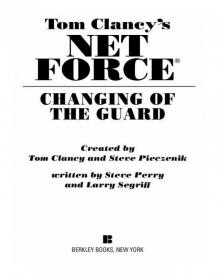 Changing of the Guard
Changing of the Guard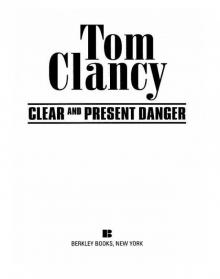 Clear and Present Danger
Clear and Present Danger Hounds of Rome
Hounds of Rome Breaking Point
Breaking Point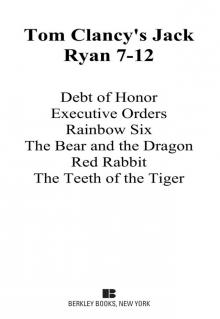 Tom Clancy's Jack Ryan Books 7-12
Tom Clancy's Jack Ryan Books 7-12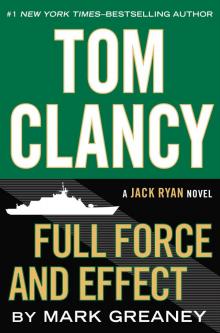 Full Force and Effect
Full Force and Effect The Archimedes Effect
The Archimedes Effect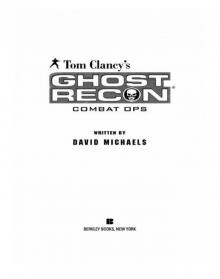 Combat Ops
Combat Ops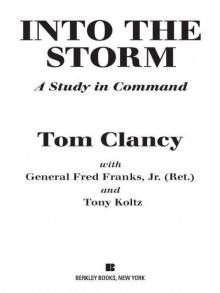 Into the Storm: On the Ground in Iraq
Into the Storm: On the Ground in Iraq Under Fire
Under Fire Point of Impact
Point of Impact Red Rabbit
Red Rabbit Rainbow Six
Rainbow Six The Hunt for Red October
The Hunt for Red October The Teeth of the Tiger
The Teeth of the Tiger Conviction (2009)
Conviction (2009)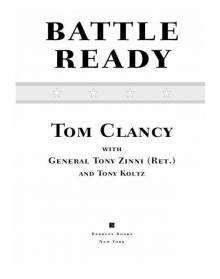 Battle Ready
Battle Ready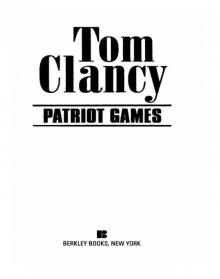 Patriot Games
Patriot Games The Sum of All Fears
The Sum of All Fears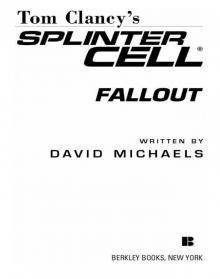 Fallout (2007)
Fallout (2007) Red Storm Rising
Red Storm Rising The Cardinal of the Kremlin
The Cardinal of the Kremlin Executive Orders
Executive Orders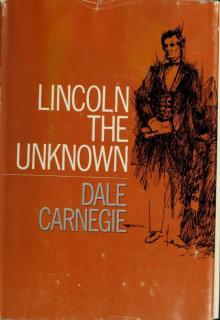 Lincoln, the unknown
Lincoln, the unknown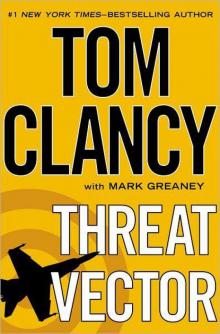 Threat Vector
Threat Vector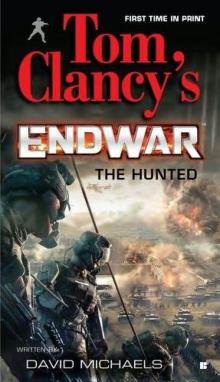 The Hunted
The Hunted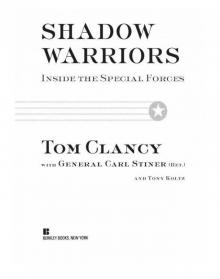 Shadow Warriors: Inside the Special Forces
Shadow Warriors: Inside the Special Forces End Game
End Game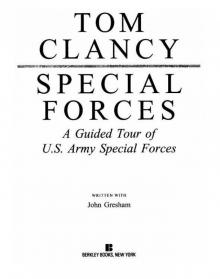 Special Forces: A Guided Tour of U.S. Army Special Forces
Special Forces: A Guided Tour of U.S. Army Special Forces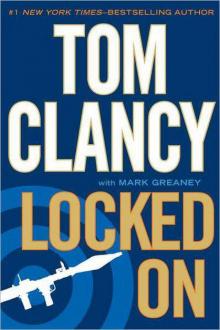 Locked On
Locked On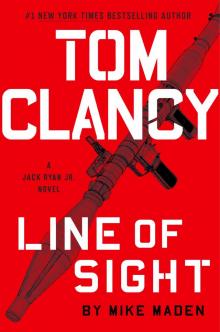 Line of Sight
Line of Sight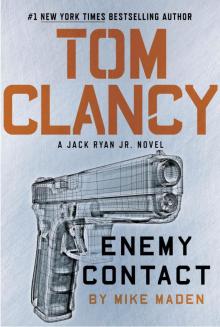 Tom Clancy Enemy Contact - Mike Maden
Tom Clancy Enemy Contact - Mike Maden Fighter Wing: A Guided Tour of an Air Force Combat Wing
Fighter Wing: A Guided Tour of an Air Force Combat Wing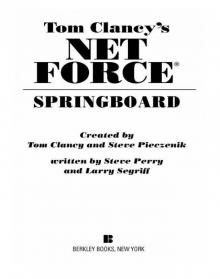 Springboard
Springboard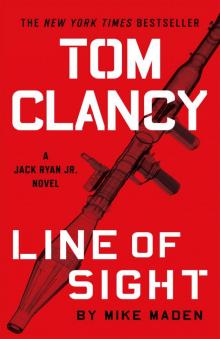 Line of Sight - Mike Maden
Line of Sight - Mike Maden EndWar
EndWar Dead or Alive
Dead or Alive Tom Clancy Support and Defend
Tom Clancy Support and Defend Checkmate
Checkmate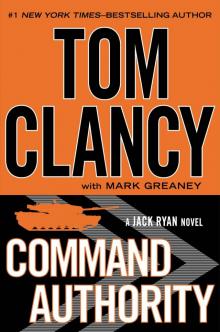 Command Authority
Command Authority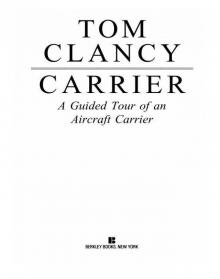 Carrier: A Guided Tour of an Aircraft Carrier
Carrier: A Guided Tour of an Aircraft Carrier Blacklist Aftermath
Blacklist Aftermath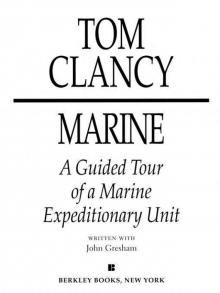 Marine: A Guided Tour of a Marine Expeditionary Unit
Marine: A Guided Tour of a Marine Expeditionary Unit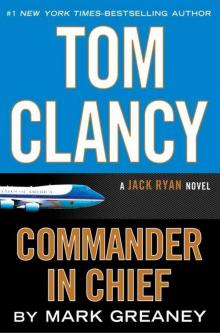 Commander-In-Chief
Commander-In-Chief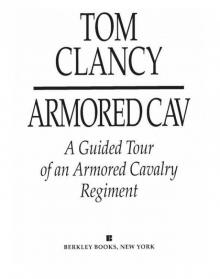 Armored Cav: A Guided Tour of an Armored Cavalry Regiment
Armored Cav: A Guided Tour of an Armored Cavalry Regiment Tom Clancy's Jack Ryan Books 1-6
Tom Clancy's Jack Ryan Books 1-6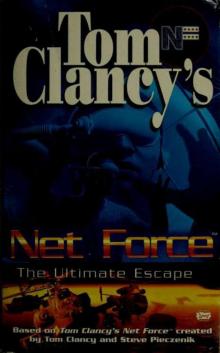 The Ultimate Escape
The Ultimate Escape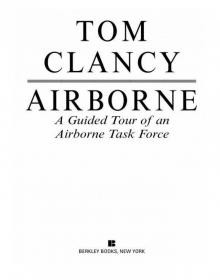 Airborne: A Guided Tour of an Airborne Task Force
Airborne: A Guided Tour of an Airborne Task Force Debt of Honor
Debt of Honor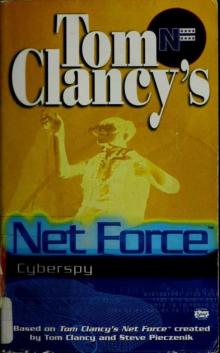 Cyberspy
Cyberspy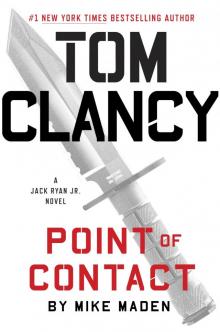 Point of Contact
Point of Contact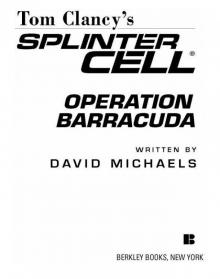 Operation Barracuda (2005)
Operation Barracuda (2005)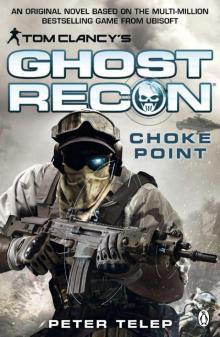 Choke Point
Choke Point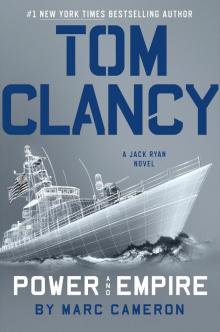 Power and Empire
Power and Empire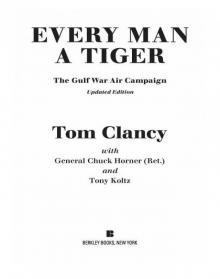 Every Man a Tiger: The Gulf War Air Campaign
Every Man a Tiger: The Gulf War Air Campaign Endgame (1998)
Endgame (1998)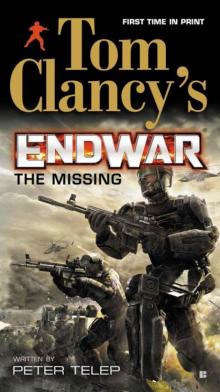 EndWar: The Missing
EndWar: The Missing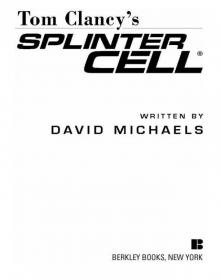 Splinter Cell (2004)
Splinter Cell (2004)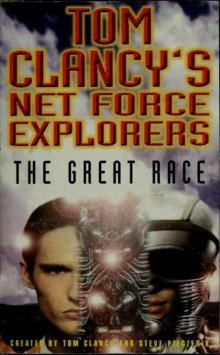 The Great Race
The Great Race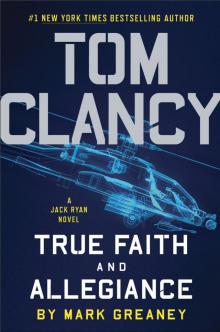 True Faith and Allegiance
True Faith and Allegiance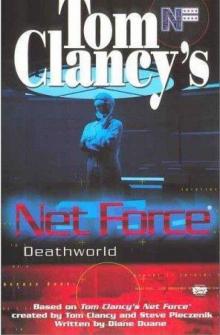 Deathworld
Deathworld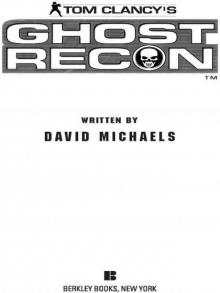 Ghost Recon (2008)
Ghost Recon (2008)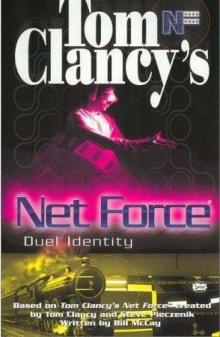 Duel Identity
Duel Identity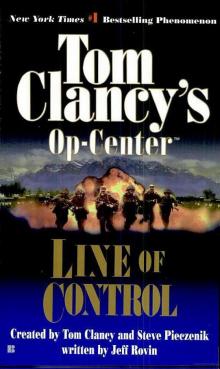 Line of Control o-8
Line of Control o-8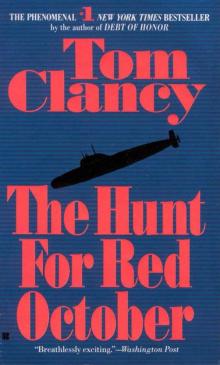 The Hunt for Red October jr-3
The Hunt for Red October jr-3 Hidden Agendas nf-2
Hidden Agendas nf-2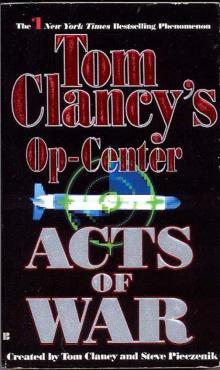 Acts of War oc-4
Acts of War oc-4 Ruthless.Com pp-2
Ruthless.Com pp-2 Night Moves
Night Moves The Hounds of Rome - Mystery of a Fugitive Priest
The Hounds of Rome - Mystery of a Fugitive Priest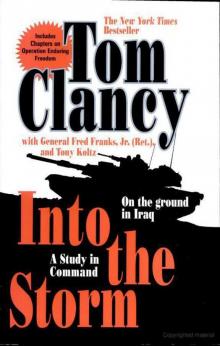 Into the Storm: On the Ground in Iraq sic-1
Into the Storm: On the Ground in Iraq sic-1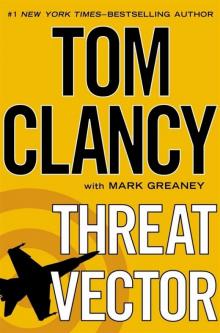 Threat Vector jrj-4
Threat Vector jrj-4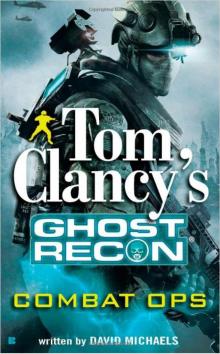 Combat Ops gr-2
Combat Ops gr-2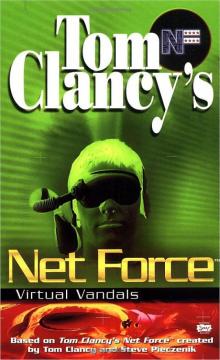 Virtual Vandals nfe-1
Virtual Vandals nfe-1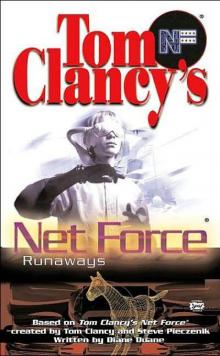 Runaways nfe-16
Runaways nfe-16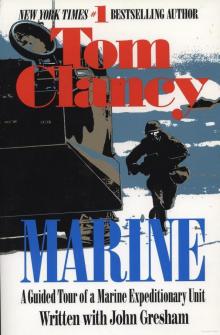 Marine: A Guided Tour of a Marine Expeditionary Unit tcml-4
Marine: A Guided Tour of a Marine Expeditionary Unit tcml-4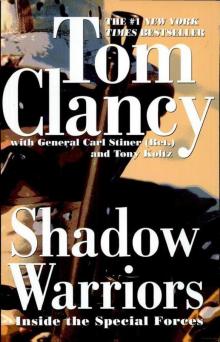 Shadow Warriors: Inside the Special Forces sic-3
Shadow Warriors: Inside the Special Forces sic-3 Jack Ryan Books 1-6
Jack Ryan Books 1-6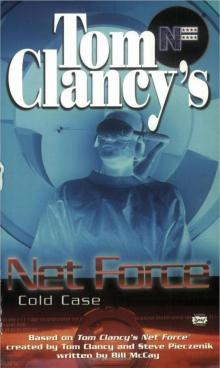 Cold Case nfe-15
Cold Case nfe-15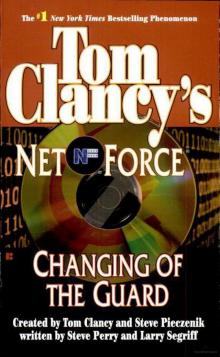 Changing of the Guard nf-8
Changing of the Guard nf-8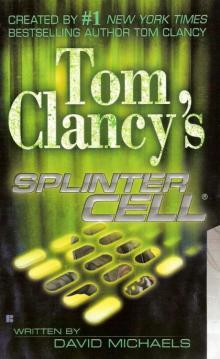 Splinter Cell sc-1
Splinter Cell sc-1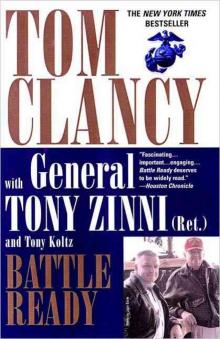 Battle Ready sic-4
Battle Ready sic-4 The Bear and the Dragon jrao-11
The Bear and the Dragon jrao-11 Fighter Wing: A Guided Tour of an Air Force Combat Wing tcml-3
Fighter Wing: A Guided Tour of an Air Force Combat Wing tcml-3 Patriot Games jr-1
Patriot Games jr-1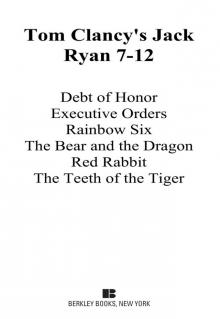 Jack Ryan Books 7-12
Jack Ryan Books 7-12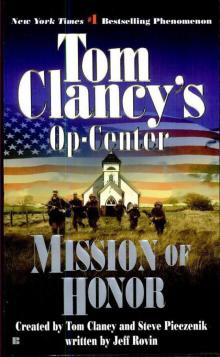 Mission of Honor o-9
Mission of Honor o-9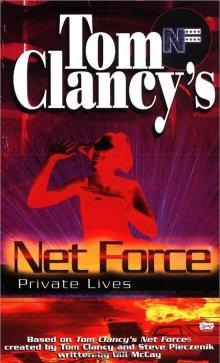 Private Lives nfe-9
Private Lives nfe-9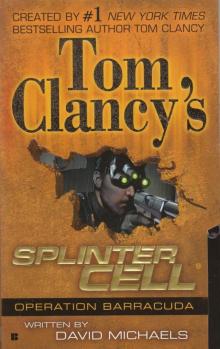 Operation Barracuda sc-2
Operation Barracuda sc-2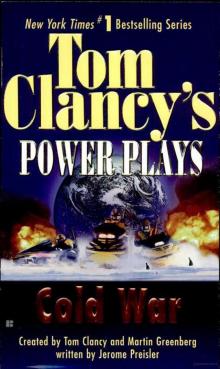 Cold War pp-5
Cold War pp-5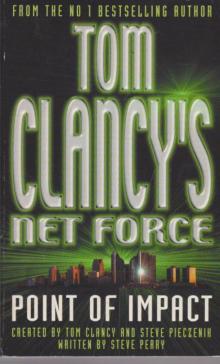 Point of Impact nf-5
Point of Impact nf-5 Red Rabbit jr-9
Red Rabbit jr-9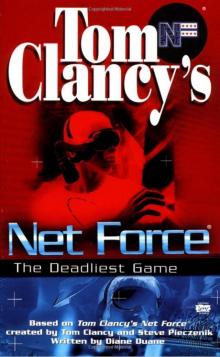 The Deadliest Game nfe-2
The Deadliest Game nfe-2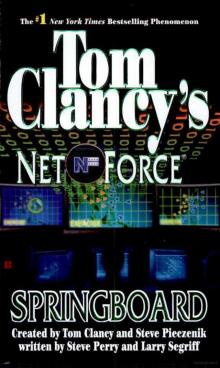 Springboard nf-9
Springboard nf-9 Safe House nfe-10
Safe House nfe-10 EndWar e-1
EndWar e-1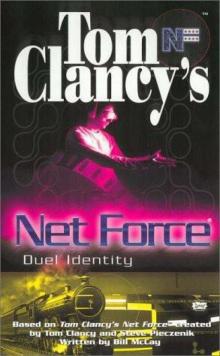 Duel Identity nfe-12
Duel Identity nfe-12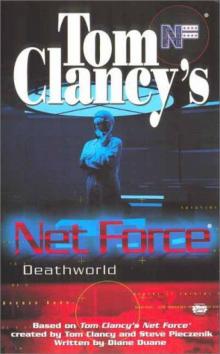 Deathworld nfe-13
Deathworld nfe-13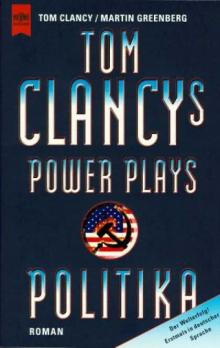 Politika pp-1
Politika pp-1 Rainbow Six jr-9
Rainbow Six jr-9 Tom Clancy's Power Plays 1 - 4
Tom Clancy's Power Plays 1 - 4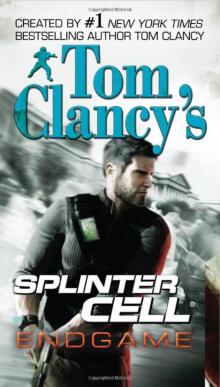 Endgame sc-6
Endgame sc-6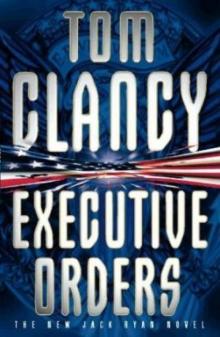 Executive Orders jr-7
Executive Orders jr-7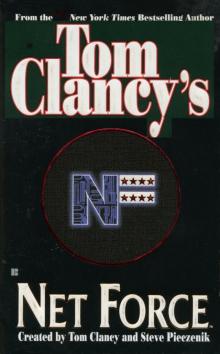 Net Force nf-1
Net Force nf-1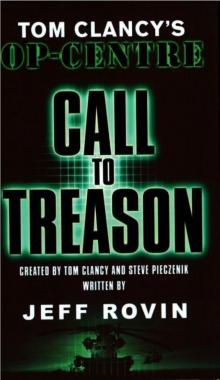 Call to Treason o-11
Call to Treason o-11 Locked On jrj-3
Locked On jrj-3 Against All Enemies
Against All Enemies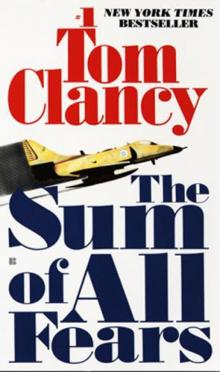 The Sum of All Fears jr-7
The Sum of All Fears jr-7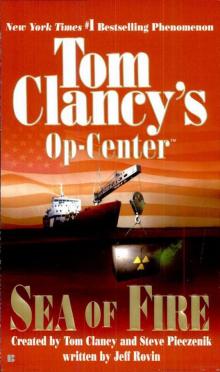 Sea of Fire o-10
Sea of Fire o-10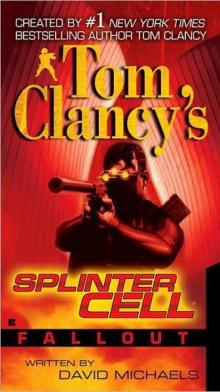 Fallout sc-4
Fallout sc-4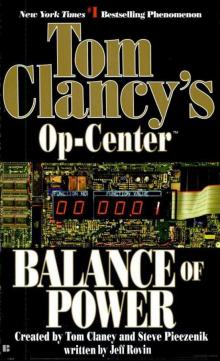 Balance of Power o-5
Balance of Power o-5 Shadow Watch pp-3
Shadow Watch pp-3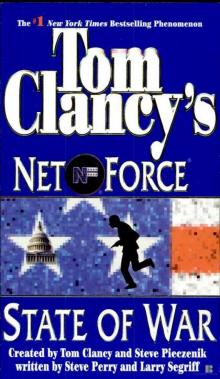 State of War nf-7
State of War nf-7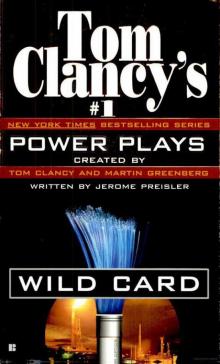 Wild Card pp-8
Wild Card pp-8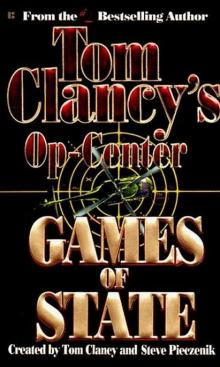 Games of State o-3
Games of State o-3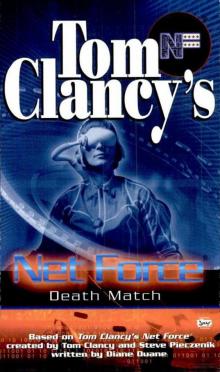 Death Match nfe-18
Death Match nfe-18 Against All Enemies mm-1
Against All Enemies mm-1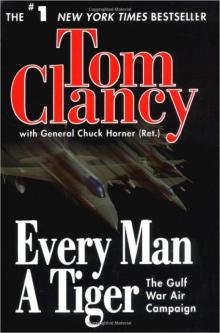 Every Man a Tiger: The Gulf War Air Campaign sic-2
Every Man a Tiger: The Gulf War Air Campaign sic-2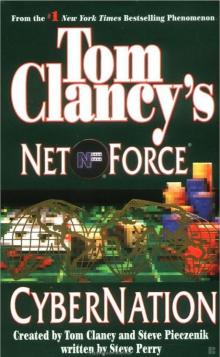 Cybernation nf-6
Cybernation nf-6 Support and Defend
Support and Defend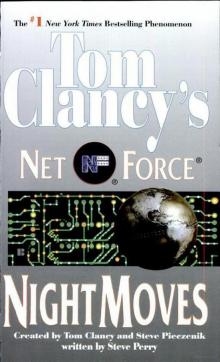 Night Moves nf-3
Night Moves nf-3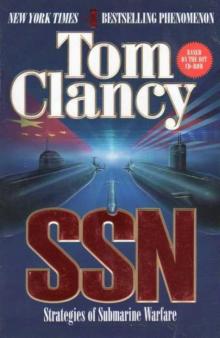 SSN
SSN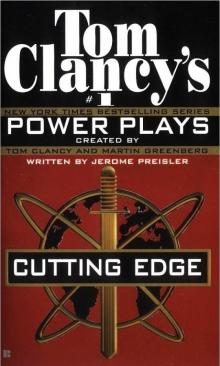 Cutting Edge pp-6
Cutting Edge pp-6 The Cardinal of the Kremlin jrao-5
The Cardinal of the Kremlin jrao-5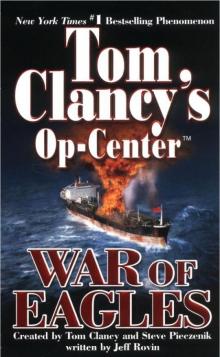 War of Eagles o-12
War of Eagles o-12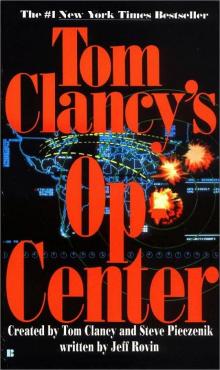 Op-Center o-1
Op-Center o-1 Mirror Image o-2
Mirror Image o-2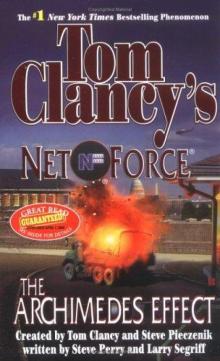 The Archimedes Effect nf-10
The Archimedes Effect nf-10 Teeth of the Tiger jrj-1
Teeth of the Tiger jrj-1 Bio-Strike pp-4
Bio-Strike pp-4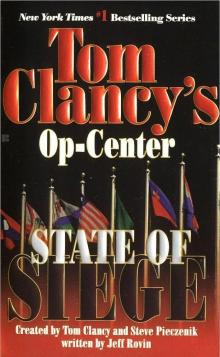 State of Siege o-6
State of Siege o-6 Debt of Honor jr-6
Debt of Honor jr-6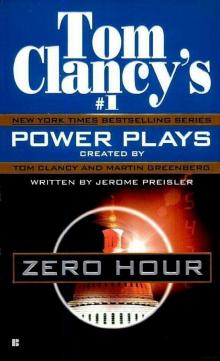 Zero Hour pp-7
Zero Hour pp-7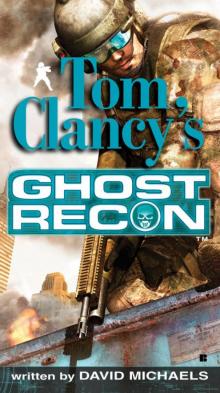 Ghost Recon gr-1
Ghost Recon gr-1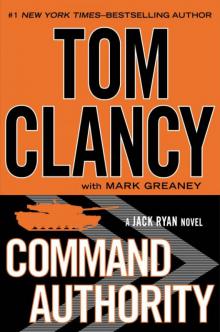 Command Authority jr-10
Command Authority jr-10 Tom Clancy's Power Plays 5 - 8
Tom Clancy's Power Plays 5 - 8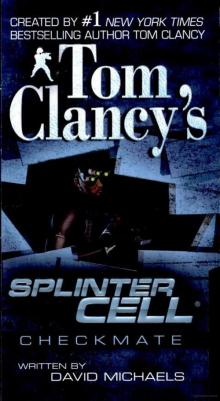 Checkmate sc-3
Checkmate sc-3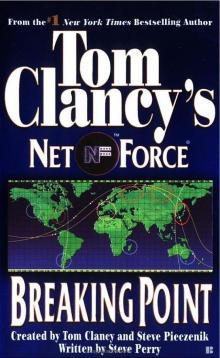 Breaking Point nf-4
Breaking Point nf-4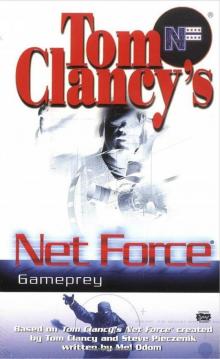 Gameprey nfe-11
Gameprey nfe-11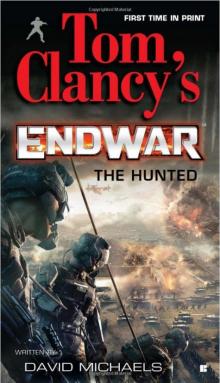 The Hunted e-2
The Hunted e-2 Hidden Agendas
Hidden Agendas Divide and Conquer o-7
Divide and Conquer o-7